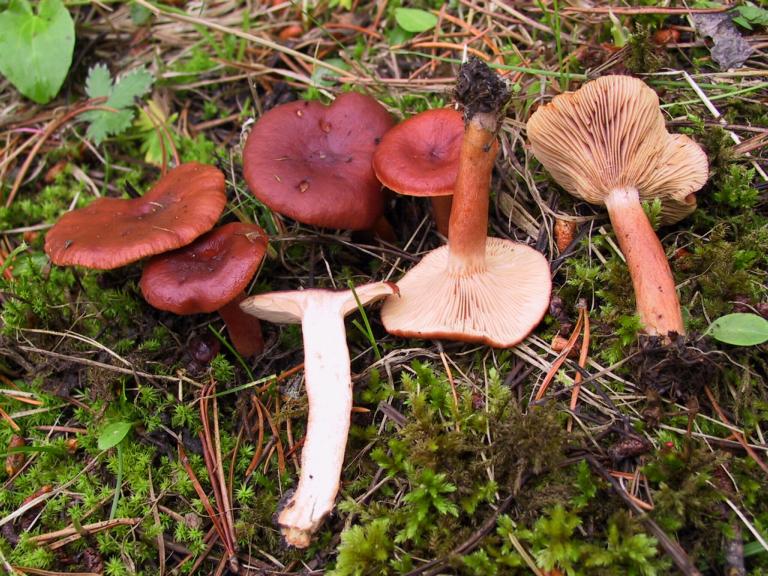
Reconstructing relationships and understanding tropical to arctic distribution.
Background & context
Milkcaps belong to several genera (Lactarius, Lactifluus and partially Multifurca) in the family Russulaceae within the Basidiomycetes. They exude a milky fluid or latex when bruised and many of them are edible, though some are not very tasty.
This topic focusses on the genus Lactarius, which has a worldwide distribution and about 450 species have been described, but we estimate the real diversity to be closer to 1000 species. They live in an obligate, mutualistic symbiosis with trees and shrubs and via the ectomycorrhized roots of their plant hosts, water and minerals are exchanged against carbohydrates. The most comprehensive molecular phylogenies of Lactarius that have up to now been published, comprise only a fraction of the species that have been described.
We know that several tropical Lactarius species form an early diverging grade to the recognized, mainly temperate subgenera. Several new tropical lineages need to be described and morphologically documented at subgenus level. we are also aware that our sampling of American and Asian taxa is insufficient compared to Europe. In this internship we aim at improving our evolutionary understanding of the milkcaps by adding missing links and data to the phylogeny.
Objectives and goals
- Improve the milkcap phylogeny
By adding DNA data from collections from understudied areas we want to understand better how the milkcaps spread from the tropics to the arctic. We will use an integrative approach and combine DNA data with morphological and ecological data.
- Reconstruct ancestral morphology and historical biogeographic patterns
Using phylogenetic techniques we will look at the evolution and diversification of milkcaps and reveal their historic biogeography and character evolution.
Methods, tasksand approach
Following methods will be used:
- DNA sequencing of non-coding and coding DNA markers using either Sanger or Illumina sequencing.
- Phylogenetic analyses of DNA sequences from fruitbody samples.
- Ancestral state reconstruction of key morphological and ecological characters, ancestral area reconstruction.
- Comparing genetic diversity with morphological character variation.
The results may lead to a scientific publication.
Projectrequirements
BSc degree in biology and interest in fungal biology.